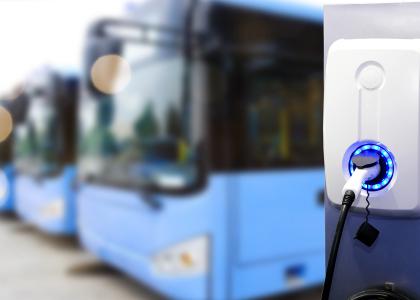A federal Energy Efficiency Resource Standard (EERS) would set energy savings targets for electric and natural gas distribution utilities throughout the U.S. Currently, 19 states have an EERS in some form. These standards have worked well in practice. A federal EERS would extend these standards to the remaining 31 states, and would also directly affect states where the state EERS is not as strong as the federal EERS. States with a strong state EERS could continue to enforce savings targets that exceed the federal targets, and would also benefit from emissions reductions caused by the EERS in neighboring states, and from the fact that decreased energy demand will modestly reduce electric and natural gas prices in all states (since prices are affected by the supply-demand balance, when demand goes down, prices generally also go down).
Under S. 548, energy savings would be documented from evaluations of energy efficiency programs prepared by evaluation experts and following evaluation guidelines to be set by DOE. There are many state-level evaluation guidelines that DOE can draw from. S. 548 provides that states can have primary responsibility for administering the EERS if they are "willing and able". We expect most states to take on this role, since they know their states and utilities well. DOE's role would be to set the rules and to provide oversite, permitting DOE to administer this program without a large federal bureaucracy.
For many months the Senate Energy Committee has been considering a Renewable Energy Standard (RES) that would allow states to count up to 5% energy efficiency savings towards the 2020 RES target. ACEEE estimates that existing state EERS's will save 5% of electric sales by 2020 and thus the proposal for 5% savings as part of an RES will have little impact. Studies in many states demonstrate that cost-effective electric and natural gas energy efficiency savings of 20% or more are available throughout the country. S. 548 would set savings targets of 15% electric savings and 10% natural gas savings by 2020. Savings from new building codes and equipment efficiency standards count towards these targets as do energy savings from combined heat and power (CHP) plants and recycled energy. Many state targets do not include codes, standards and CHP, and thus a 15% federal electricity saving target is roughly equivalent to state targets of under 10% savings by 2020. Based on state targets and recent state-level accomplishments, we find that the savings levels in S. 548 are reasonable.
According to ACEEE's recent analysis, the energy saved through S. 548 could power almost 48 million households in 2020, accounting for about 36% of the households in the United States. Moreover, this level of energy savings will save American consumers and businesses almost $170 billion, create over 220,000 jobs and reduce greenhouse gas pollution by 262 million metric tons while eliminating the need to build 390 power plants. These impacts are all over and above savings from state EERS's that have already been adopted – our calculations include current EERS's as part of the basecase.
We also see an EERS as a critical cost-containment strategy for future federal climate change legislation. Modeling done by ACEEE, and discussed in the body of my testimony, shows that a national EERS would reduce electricity prices, substantially dampening the upward pressure on prices caused by climate change legislation.
ACEEE has been estimating the energy savings from potential energy legislation since the 1980s. We have conducted detailed analyses on the energy savings from the Energy Policy Act of 2005 (EPAct) and from the Energy Independence and Security Act of 2007 (EISA). The EERS in S. 548 will save more energy in 2020 than all of the efficiency provisions in EPAct combined and nearly as much as all of the efficiency provisions in EISA combined, and this includes EISA's Corporate Average Fuel Economy Standard. The EERS is the "800 pound gorilla" of energy efficiency policy. These benefits will not occur if energy efficiency is just a safety valve to a renewable energy standard. Energy efficiency is important enough in its own right that the U.S. deserves and needs an EERS with savings targets like those in S. 548. I strongly recommend that the next federal energy bill include such an EERS as a centerpiece.


